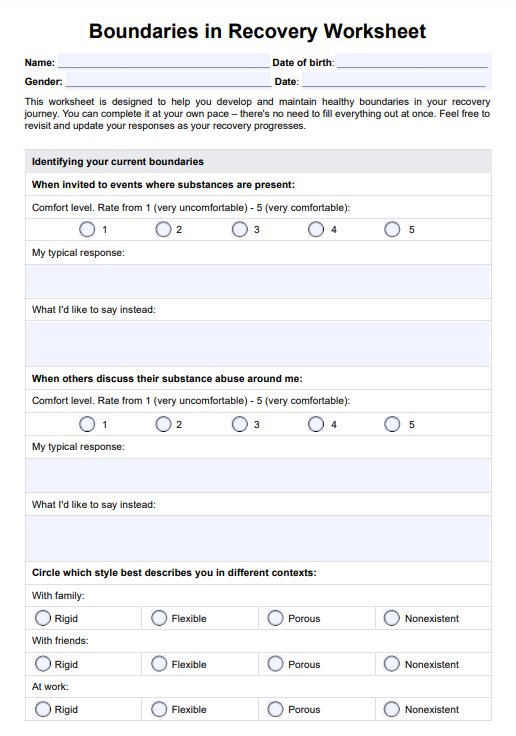Boundaries are crucial in creating a supportive and structured environment, safeguarding mental health, preventing triggers, and fostering positive connections. They contribute to a balanced and fulfilling life during the recovery journey.

Boundaries in Recovery Worksheet
Use our Boundaries in Recovery Worksheet to help clients explore and practice setting boundaries in their journey.
Use Template
Boundaries in Recovery Worksheet Template
Commonly asked questions
Establishing and maintaining boundaries aids in stress management, providing a sense of order and control. This, in turn, promotes a stable emotional state and contributes to overall mental well-being.
Yes, clear boundaries assist in identifying and preventing potential triggers that may negatively impact emotional well-being. By proactively managing and avoiding triggers, individuals can navigate recovery more effectively.
EHR and practice management software
Get started for free
*No credit card required
Free
$0/usd
Unlimited clients
Telehealth
1GB of storage
Client portal text
Automated billing and online payments











